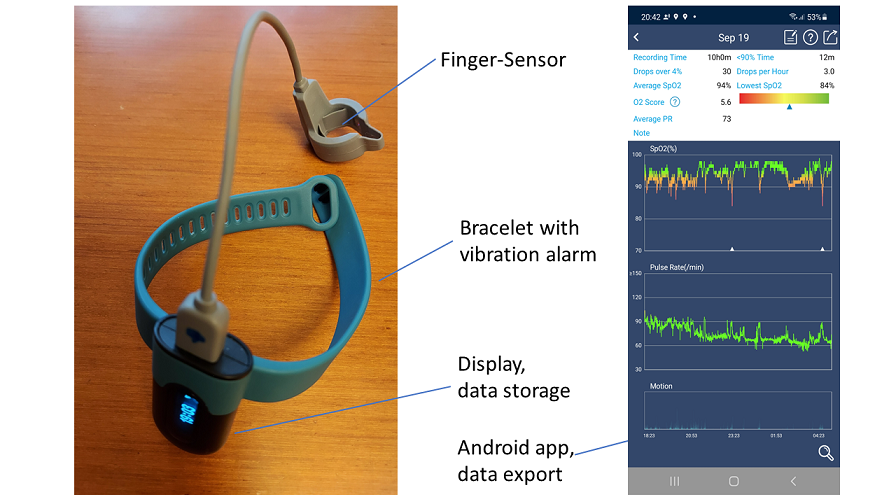The study reports about a case of a lung cancer patient with increasing difficulties in falling asleep and frequent periods of wakefulness. Severe dyspnea related to pneumonitis caused as a side effect of immunotherapy worsened the situation. Eventually, fear of falling asleep developed, including panic attacks and anxiety of choking, which was shown to lead to nights of complete wakefulness. The patient did not only sleep poorly; he did not sleep at all at night for several days, as evidenced by the notes he made during the night. Polygraphy showed no evidence of sleep-disordered breathing, but frequent periods of wakefulness and reduced basal saturation around 90% during sleep due to lung changes such as extensive functional failure of the left upper lobe with position-dependent shunts. The authors hypothesized that the symptoms described were causally related to a drop in oxygen saturation in the patient's blood. Therefore, they pursued the goal of finding a measurement technique that is as inexpensive as possible and that the patient can operate without outside assistance and great effort. So the patient started using a low-cost wearable device that allows simultaneous measurements of blood oxygen content, pulse rate and movement intensity. It consists of a finger ring with pulse oximetry sensor and a wristband with the control unit containing a vibration motor. The described device reliably warned of disturbances in oxygen concentration in the blood during the night with its vibration alarm. By use of that device during the whole night at home, the events of reduced oxygen saturation and the anxiety symptoms were reduced. Sleep disturbances with sudden awakenings did not occur when using the device. The patient benefited from the security gained in this way and slept much more peacefully, and he could spend nights without waking up again. In conclusion, wearable oximeters with vibration alarm can be recommended for patients’ home care in lung cancer patients.

